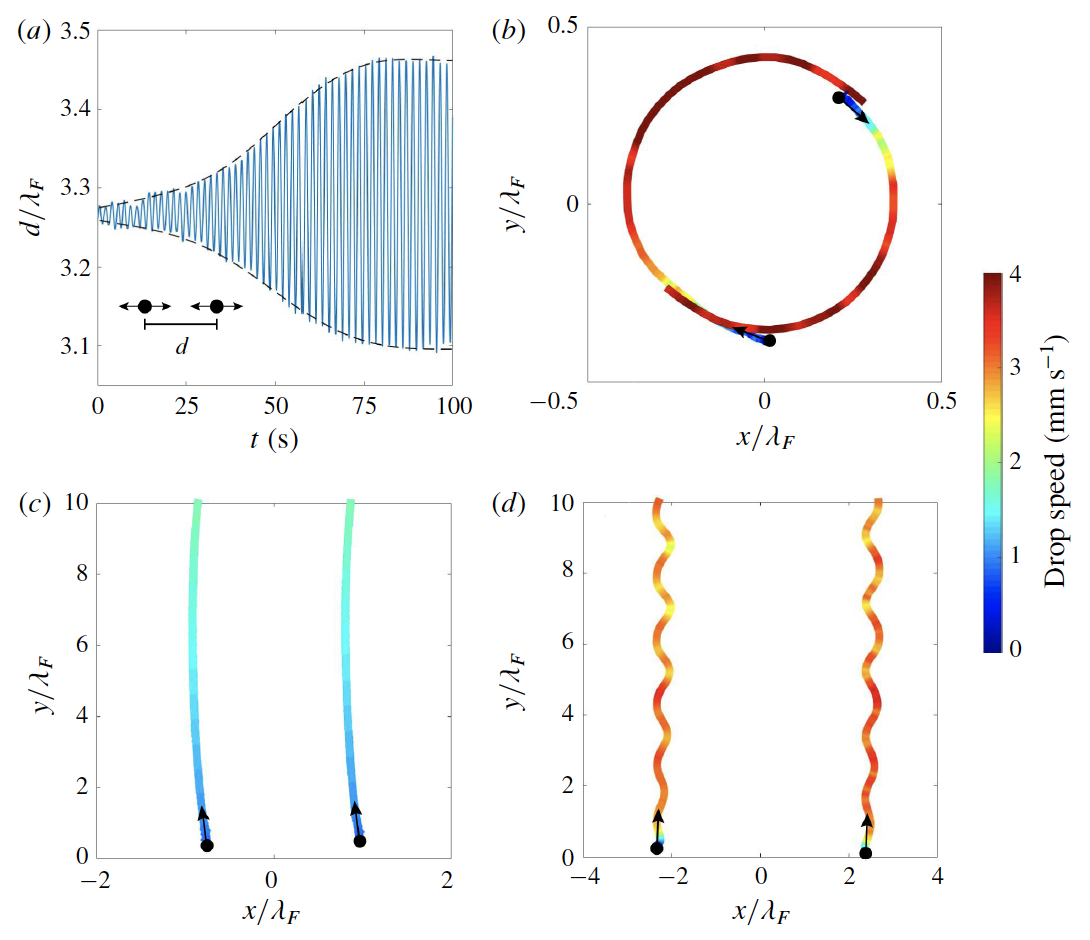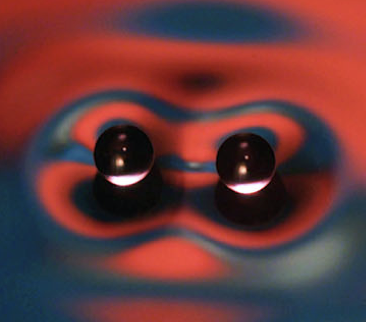
We present the results of an integrated experimental and theoretical investigation of the vertical motion of millimetric droplets bouncing on a vibrating fluid bath. We characterize experimentally the dependence of the phase of impact and contact force between a drop and the bath on the drop’s size and the bath’s vibrational acceleration. This characterization guides the development of a new theoretical model for the coupling between a drop’s vertical and horizontal motion. Our model allows us to relax the assumption of constant impact phase made in models based on the time-averaged trajectory equation of Molácek and Bush (J. Fluid Mech., 2013) and obtain a robust horizontal trajectory equation for a bouncing drop that accounts for modulations in the drop’s vertical dynamics as may arise when it interacts with boundaries or other drops. We demonstrate that such modulations have a critical influence on the stability and dynamics of interacting droplet pairs. As the bath’s vibrational acceleration is increased progressively, initially stationary pairs destabilize into a variety of dynamical states including rectilinear oscillations, circular orbits and side-by-side promenading motion. The theoretical predictions of our variable-impact-phase model rationalize our observations and underscore the critical importance of accounting for variability in the vertical motion when modelling droplet–droplet interactions.
See paper: Couchman, M.M.P., Turton, S.E. and Bush, J.W.M., JFM (2018).
